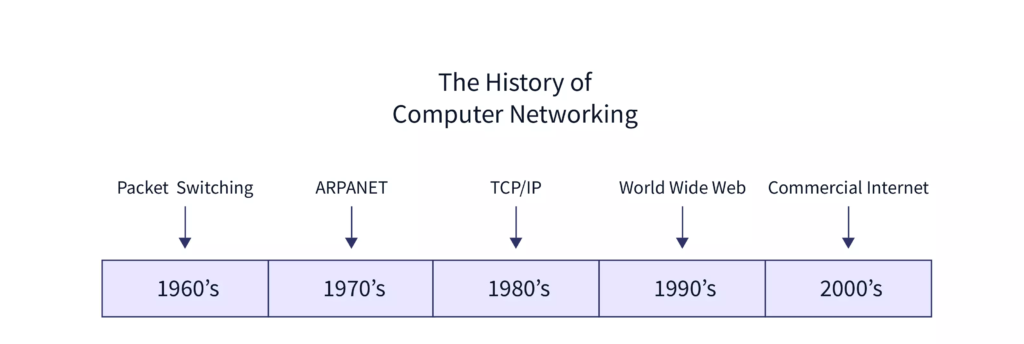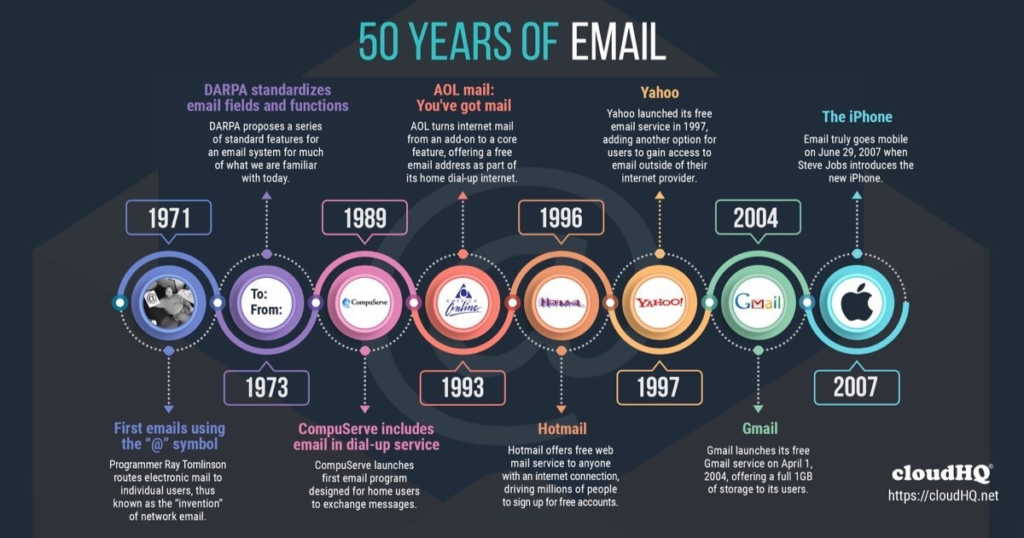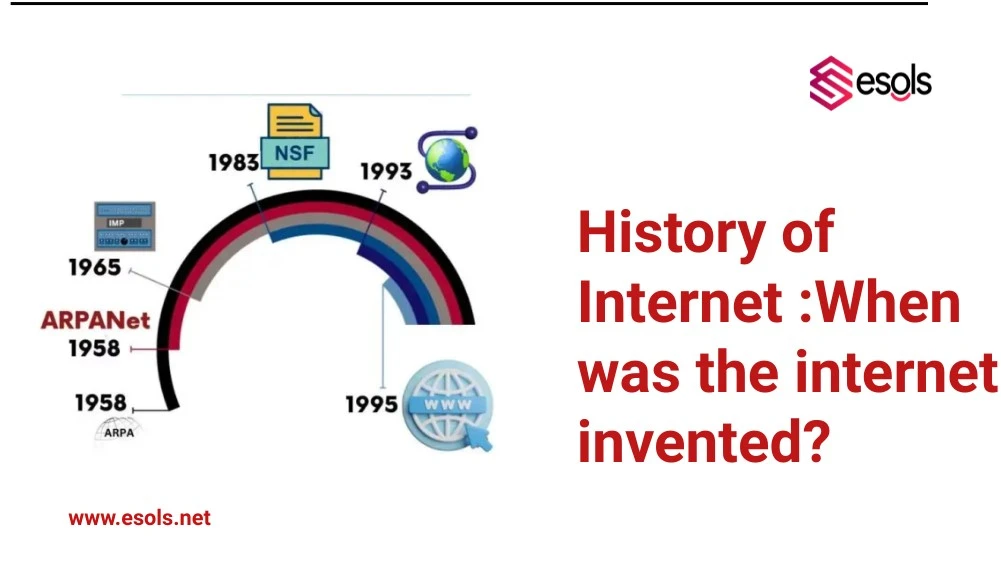In 1960, when the Cold War between North America and the Soviet Union. Both superpowers were in the race to gain control of the deadliest nuclear weapons. The US realized that it had to build a system that could avoid a Nuclear Attack from the Soviet Union.
Although the computers were there, the large size and too much weight troubled scientists while moving these machines. Consequently, researchers had to travel to numerous destinations for data sharing.
Such problems led the expert to find out a solution for efficient data transfer and the internet was born.let’s dive into details of History of Internet.
Table of contents
History of Internet : Beginning of Arpanet
Since the launch of the Sputnik satellite from the Soviet US was in a hurry to strengthen its communication system and defend itself from Nuclear destruction. The US government invited experts and made a team.
This group of scientists and engineers worked tirelessly and the Arpanet (advanced research project agency network) was invented. Later on, it evolved into the internet which has become faster, accurate, and efficient in today’s era.
It brings us to the question that who single-handedly invented the internet. The invention involved efforts from numerous professionals.

Paul Baran:
An expert engineer who had a major contribution to the Arpanet in 1959 when he collaborated with an American think tank. The purpose was to secure the US Air Force from nuclear attacks. Baran suggested a mechanism without any central command point which allowed the communication in case a single point would have been destroyed.
Lawrence Robert:
A chief scientist at Arpanet who liked Paul`s idea and they started working together to create a seamless distribution network.
Bob Khan:
Was an American computer scientist who developed TCP (transmission control protocol) that controls the way information moves using a network. Which later revolutionized and became the internet that we are using today.
Apart from the above researchers, the team had various individuals who showed dedication to this project. These include Paul Mockapetris, the inventor of DNS, Tim Berners creator of World Wide Web, and Marc Anderson, the inventor of a first web browser.
Use of a Computer Network
Lawrence Roberts used two computers placed in different destinations to talk for the first time in 1965. He used a telephone line with a modem and shared digital data through packets. This led to the development of data-switching packets.
Leonard Kleinrock was the person behind this invention and he used it for the first time. Firstly, the system crashed when he wanted to log in. However, the second attempt was successful and the message was delivered between two connected computers.

Arpanet: Beginning to the End
President Dwight was the founder of the advanced research project Agency Network (Arpanet). It was aimed to help the US military for safety and effective communication. Over time, it grew bigger and required a proper set of rules to handle the data packets.
In 1974, two genius-minded individuals named Bob Khan and Vint Cerf introduced a new way known as transmission control protocol (TCP). That enabled multiple computers to communicate in the same language.
TCP marked the beginning of a network that connected the entire world and end of Arpanet, which laid the foundation of the internet.
Communication through Emails: The Evolution of the Internet
As the growth of the internet, people felt the need for repetitive communication. Moreover, users have realized that a tool should be there to help them communicate with different computers. That is when they started sending and receiving emails.
Ray Tomlinson invented electronic mail, which we are using today. He also presented the idea that a message should be claimed using the @ symbol. Earlier, the symbol was used to differentiate between the user and his computer. After the invention of DNS, the username was increased to user@host.domain.
Over time, users started sending emails to their friends and family to chat and gossip. That is how email evolved and people have begun using it to make new friends.

The Adoption of TCP/IP by ARPANET in 1983:
The adoption of the Transmission Control Protocol/Internet Protocol (TCP/IP) by ARPANET in 1983 marked a pivotal moment in the history of the Internet. This event marked the transition from a collection of disparate networks to a unified and cohesive global network, laying the foundation for the modern Internet as we know it today.
Before 1983, ARPANET, the precursor to the Internet, used a protocol called Network Control Protocol (NCP) to manage communications between computers. However, NCP had limitations, particularly in terms of scalability and interoperability among different networks. This posed a significant challenge as the number of connected devices and networks began to grow.
Birth of the Modern Internet
In response to these limitations, computer scientists Vinton Cerf and Robert Kahn developed TCP/IP in the early 1970s. TCP/IP was designed to be a robust and flexible set of communication protocols that could work across various types of networks. TCP ensured the reliable transmission of data by breaking it into packets, while IP handled the addressing and routing of these packets to their destination.
On January 1, 1983, known as “Flag Day,” ARPANET officially switched from NCP to TCP/IP. This adoption was a monumental task, requiring all connected computers to simultaneously transition to the new protocol. The successful switch demonstrated the effectiveness and reliability of TCP/IP, solidifying its role as the standard protocol for network communication.
The adoption of TCP/IP enabled different networks to interconnect and communicate seamlessly, paving the way for the expansive and interconnected network we now call the Internet. This milestone not only marked the birth of the modern Internet but also set the stage for its exponential growth and the development of countless applications and services that have since transformed the world.
Conclusion
People cannot pinpoint the Evolution of the internet to a single date or individual. Instead, it is the result of collaborative efforts and groundbreaking ideas spanning decades. From early concepts of a global network to the creation of ARPANET, the development of TCP/IP, and the advent of the World Wide Web, each step was crucial in shaping the Internet we know today.
Readmore: Amazons GPT55X : A Revolution in AI Technology
FAQ’s Related History of Internet
They sent the first message over ARPANET on October 29, 1969.
People credit Tim Berners-Lee with inventing the World Wide Web in 1989.
Packet switching transmits data by breaking it into small packets and sending them over a network.
Vinton Cerf and Robert Kahn developed TCP/IP in 1973.
Email, introduced in 1971, allowed instant communication between users over a network, changing how people interacted digitally.

Smith
Welcome to my blog! As an SEO expert with over 15 years of experience, I’ve witnessed the transformative power of search engine optimization from the very beginning of my career. In this blog series, I’ll delve into the crucial role SEO plays in the success of small businesses. Join me on this journey to uncover how leveraging data-driven insights and innovative SEO techniques can propel your small business to new heights, attract a broader audience, and drive sustainable growth in the digital age. Whether you’re a seasoned entrepreneur or just starting out, you’ll find valuable insights and practical tips to enhance your SEO strategies.


